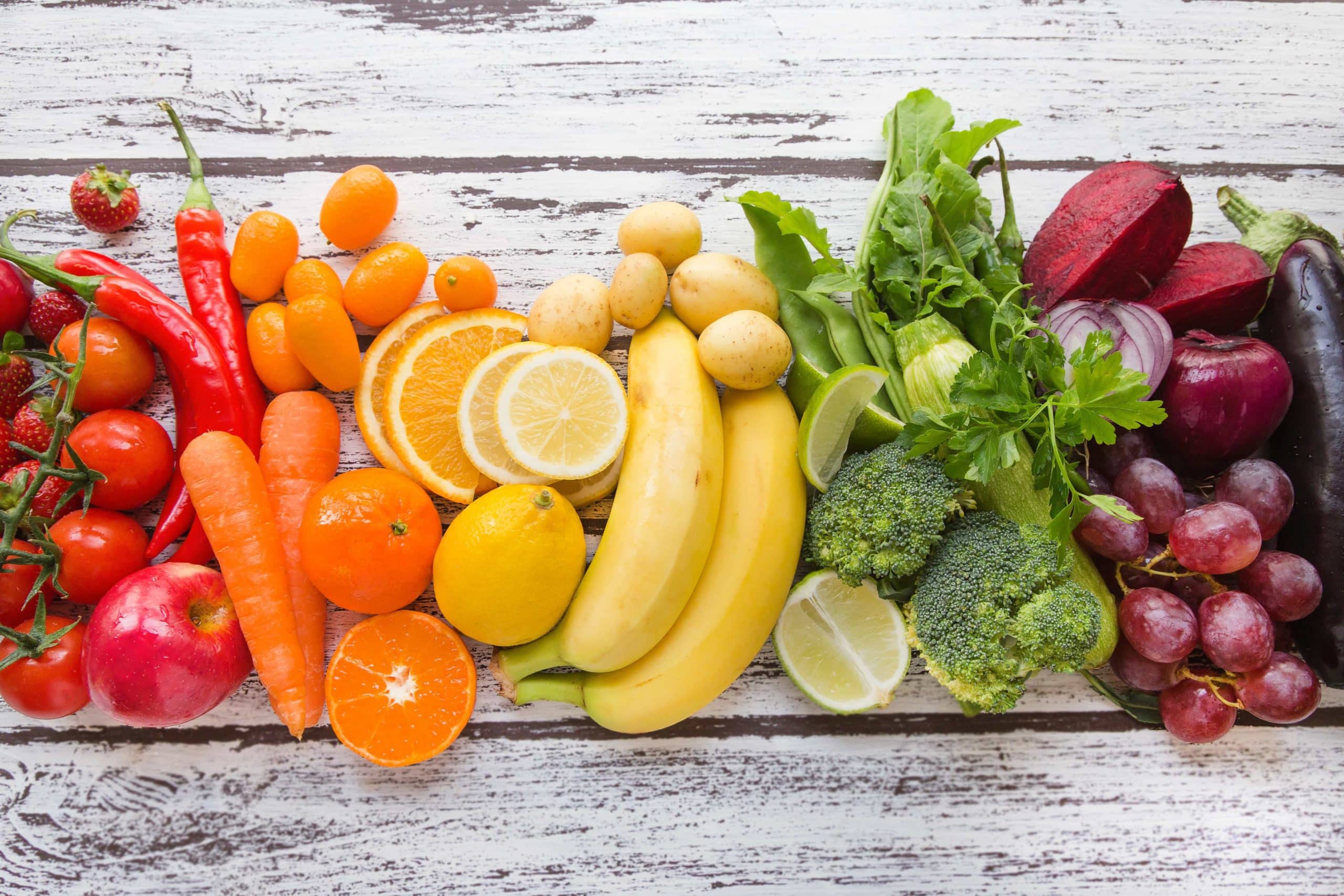By Kristin Kirkpatrick, MS, RDN, Senior Fellow of Meadows Behavioral
Last month, I celebrated National Nutrition Month by asking each of you to dedicate more than just 31 days to get your diet back on track. To truly feel better, you should focus on well-balanced eating year-round. This month, we continue the journey by adding more color to our diet.
Americans are significantly lacking in their fruits and vegetables. Additionally, efforts from public health campaigns to boost consumption have failed. That’s why you won’t hear me tell my patients to eat more fruits and vegetables. Instead, I’ll hopefully achieve the same goal by asking you to focus on eating at least five or more colors a day—none of which are artificial.
Understanding Phytonutrients
Did you know that the more deeply hued a plant is, the better it is for your health? It’s true. That’s why a sweet potato will always give you greater nutrient density than a white potato and why a red delicious apple will provide more disease-fighting capability than a yellow apple. This all boils down to compounds in plants called phytonutrients.
Phytonutrients are chemical compounds found in plants that play a valuable role in human health and nutrition. There are a few major classes of phytonutrients. Although phytonutrients differ in structure, they all work for the same goal of protecting your health. They are the superheroes of the plant world, swooping in and reducing harmful free radicals from the body.
Plants are loaded with vitamins and minerals that play an active role in keeping you healthy. However, your body can’t make phytonutrients on its own. Eating a variety of plant-based foods will give your body the nutrients it needs. Eating a well-balanced diet will provide you with many phytonutrients, each performing a specialized duty to your overall health and wellness.
Phytonutrients give fruits and vegetables their color. Phytonutrients play a critical role in antioxidant ability by protecting your eyes, maintaining a healthy immune system, and facilitating cell signaling. Your body must maintain a balance of oxidants and unreactive molecules. When that balance shifts to more oxidants, your healthy cells can become severely damaged. Therefore, phytonutrients help maintain that healthy balance by neutralizing unpaired electrons on potentially dangerous molecules stabilizing the oxidant.
Incorporating More Colorful Fruits and Vegetables
There are many phytonutrients already in your diet. You should simply know where to look for them. Colorful foods signal what type of phytonutrients they contain. Colorful fruits and vegetables are excellent sources of carotenoids, while dark green and leafy vegetables are rich in bioflavonoids. As with every diet, you might fall short some days. You should use phytonutrient foods as a foundation and add supplements when needed for a well-balanced diet. Here are a few guidelines to get you started on your colorful quest.
- Choose the five colors you want to focus on.
Vary the colorful vegetables that you’re deriving various phytonutrients from daily.
- Make green a constant.
Understanding the unique benefits of vegetables by color ensures you’ll consume more leafy greens (spinach) and cruciferous vegetables (broccoli) every day.
- Choose actual food, not products as your color sources.
That means no pills that promise a variety of fruits and vegetables in them or chips that claim to have spinach in them. These options are never a replacement for the real colorful fruits and vegetables.
- No limits on any color that’s considered non starchy
For fruit and starchy vegetables, eat them liberally. If you’re overweight or struggle with balancing blood sugar, you don’t want to make these your ONLY color options. French fries shouldn’t be an option on a regular basis.
- Don’t forget about black and white options.
This includes black beans, blackberries, tofu, and cauliflower.
- Challenge yourself to consume more than five.
Use five as a reasonable goal to achieve, but you should strive to get closer to ten.
- Make your color goals a family affair.
I take my kids grocery shopping with me and allow them to choose their colors for the cart. This allows them to connect with their food and draw interest in the nutritional benefits that plants provide.
How Colorful Foods Impact Your Overall Health
Each group of phytonutrients provides unique health benefits. No single fruit or vegetable contains every phytonutrient, but incorporating more colorful fruits and vegetables into your diet will maximize the overall health benefits that these plants have. Phytonutrients typically concentrate in the plant’s skin, helping to protect against environmental stressors such as UV radiation, pests, and pollution. When humans consume these phytonutrient foods, they can also reap the same benefits.
The phytonutrient lutein is found in green leafy vegetables and some yellow and orange fruits and vegetables, protecting plants from UV radiation. Incorporating more lutein into your diet leads to a lesser chance of developing age-related macular degeneration. Dark red and purple fruits are rich in anthocyanins, which protect against cardiovascular disease. Heart disease is the leading cause of death in America, so consuming more anthocyanins significantly lowers your risk of developing cardiovascular disease.
Cocoa is rich in flavenoids and improves endothelial function by dilating blood vessels and lowering blood pressure. Found in apples and pears, quercetin improves pulmonary function and reduces the risk of asthma. Additionally, phytonutrients show compelling benefits in preventing cancer. Phytonutrient foods block almost every step of cancer pathogenesis, including repairing damaged DNA. As a result, phytonutrients inhibit free radicals forming, preventing the onset and slowing the growth of cancer and regulating hormones that might stimulate cancer.
Ensure that half of your plate is always filled with colorful fruits and vegetables. Even making minor changes to incorporate more phytonutrients in your diet can significantly impact your overall health and well-being.
About The Meadows
The Meadows Behavioral Healthcare family of programs understands that food choices impact the overall success of treatment. Many nutrients have connections with depression, anxiety, and addiction. There are few treatment programs that realize this connection, and I’m proud to be a Senior Fellow of this incredible organization.



